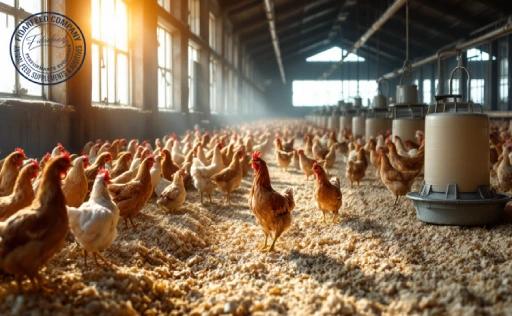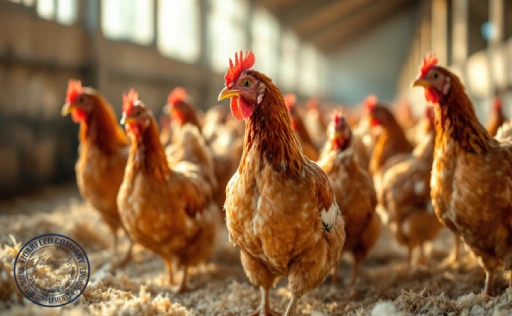Why is my dog stressed? If you’ve found yourself asking this question, you’re not alone. Stress in dogs is more common than many breeders and those in the dog feed industry might think. Whether you’re a seasoned breeder or just starting out, understanding canine stress is essential, not only for the welfare of your dogs but also for the success of your breeding program. Stressed dogs can experience a range of health issues, behavioral problems, and even reduced reproductive success. In this article, we’ll explore the common causes of stress in dogs and what you can do about them. Ready to make a positive change for your dogs? Let’s dive in.
Understanding Dog Stress: What Every Breeder Should Know
Dog stress isn’t just about barking or pacing. It’s a physiological and emotional response to situations that overwhelm your dog’s ability to cope. Just like humans, dogs can experience chronic stress, which negatively impacts their health.
Learn more about: Synbiotic Supplement for Dogs and Cats
According to a study published in Nature, long-term stress in dogs can lead to elevated cortisol levels, resulting in weakened immune systems, digestive problems, and anxiety-related behaviors. For breeders, stress can mean smaller litters, lower conception rates, and even maternal rejection of puppies.
Common Causes of Stress in Dogs: The Top Triggers to Watch For
There are many answers to “why is my dog stressed?” Common causes of stress in dogs include changes in routine, loud noises, unfamiliar people or animals, and isolation.
Learn more about: Why Your Dog Has Severe Diarrhea and How to Cure It
Even something as simple as moving their bedding can unsettle some dogs. Breeding dogs are especially sensitive to stress during mating, pregnancy, and after whelping. Another overlooked cause is diet; poor-quality feed can affect their physical health and mood.
Is Your Breeding Environment Causing Stress? Signs You Shouldn’t Ignore
The breeding environment plays a huge role in a dog’s stress levels. Overcrowded kennels, lack of quiet spaces, and inconsistent schedules can make dogs anxious.
Learn more about: The Ultimate Guide to Skin Diseases in Dogs: Symptoms, Treatment, and Prevention
For example, dogs housed in noisy or chaotic areas often develop pacing habits or excessive barking. Clean, well-ventilated spaces with predictable routines help foster a sense of security. Remember, a calm mother is more likely to raise calm, healthy puppies.
Separation Anxiety in Dogs: Why It’s a Major Stress Factor for Breeders
Separation anxiety isn’t just a problem for pet owners. Breeding dogs, especially those raised closely with handlers, can develop extreme anxiety when left alone.
Learn more about: Understanding Skin Problems and Hair Loss in Dogs: Symptoms, Causes & Solutions
This can manifest in destructive behavior, excessive vocalization, and refusal to eat. If dogs are abruptly removed from their littermates or handlers, the risk increases. Gradual desensitization and the use of comfort items, like familiar bedding, can ease transitions.
Health Issues That Cause Stress in Dogs: What Breeders Need to Know
Underlying medical conditions are often a hidden source of stress. Chronic pain, dental disease, parasites, and gastrointestinal issues can make dogs irritable or withdrawn.
Learn more about: Best Dog Foods for Small Breeds: Pomeranian Breeder Edition
According to the Journal of Veterinary Behavior, health-related discomfort often leads to anxiety-like symptoms. Breeders should regularly monitor their dogs’ health with veterinary check-ups and high-quality nutrition. A healthy body supports a healthy mind.
Socialization Stress: Are New Dogs or Puppies Making Your Pack Anxious?
Introducing new dogs or puppies to an existing group can be tricky. If not done correctly, it can lead to social stress, resulting in aggression or submissive behaviors.
Learn more about: Best Probiotic for Small Dogs: A Complete Guide
Breeding kennels must manage introductions carefully, starting with short, supervised interactions. Respect each dog’s need for space, and avoid forcing interactions. An overstimulated dog may display signs of stress like shaking, drooling, or avoidance.
Noise and Environmental Stressors: How Your Dog’s Surroundings Affect Their Well-Being
Noise is one of the most common causes of stress in dogs. Studies show that sudden loud sounds, like thunderstorms or construction noise, can trigger panic responses. Even constant background noise in busy kennels can be harmful. Soundproofing, white noise machines, or classical music have been proven to calm dogs. Providing quiet time away from disturbances can dramatically reduce anxiety.
How Breeding Cycles and Hormonal Changes Trigger Stress in Dogs
Hormonal shifts during estrus, pregnancy, and lactation can cause mood swings and stress. Female dogs may become more anxious or defensive, especially around other dogs or people.
Learn more about: Probiotic Supplements
Males can become restless when a female in heat is nearby, leading to pacing and whining. Breeders should respect these biological changes by reducing external stressors and ensuring females have privacy and comfort during sensitive times.
Recognizing the Signs of Stress in Dogs: From Subtle to Serious
Knowing how to read your dog’s body language is key to identifying stress early. Common signs include panting when not hot, drooling, shaking, tucked tails, and avoidance behaviors. More serious indicators include loss of appetite, self-harm (like chewing paws), or aggression. Early detection helps prevent stress from escalating into chronic health or behavior issues.
Practical Tips to Reduce Stress in Dogs: A Guide for Responsible Breeders
Start with the basics: provide a balanced diet, fresh water, and a clean, quiet space. Establish predictable routines for feeding, exercise, and socialization. Enrichment activities, such as puzzle feeders or scent games, engage dogs mentally and physically, reducing boredom and anxiety. Gentle handling and positive reinforcement create trust and a sense of safety, which is crucial for both breeding success and overall well-being.
When to Seek Professional Help: Veterinary and Behavioral Support for Stressed Dogs
Sometimes, despite your best efforts, stress persists. This is when professional intervention is necessary. Veterinarians can rule out or treat health conditions contributing to stress.
Learn more about: Catalog
Certified canine behaviorists can help design tailored management plans, including desensitization techniques or behavior modification programs. In some cases, anxiety medications may be recommended, but only under veterinary supervision.
Final Thoughts: Creating a Stress-Free Life for Your Breeding Dogs
In the world of dog breeding and the broader animal feed industry, understanding and addressing the common causes of stress in dogs is essential. A calm, happy dog isn’t just a pleasure to work with—it’s also healthier and more successful in breeding. By paying attention to their environment, health, social needs, and emotional well-being, you can foster a thriving, low-stress kennel.
Have you experienced stress-related challenges with your dogs? What strategies have worked for you? Feel free to leave a comment, ask questions, or share your thoughts. We’d love to hear from you!









2 Comments. Leave new
Bravo, what necessary words…, an excellent idea
Thank you so much for your kind words! I’m glad you found the content helpful and inspiring